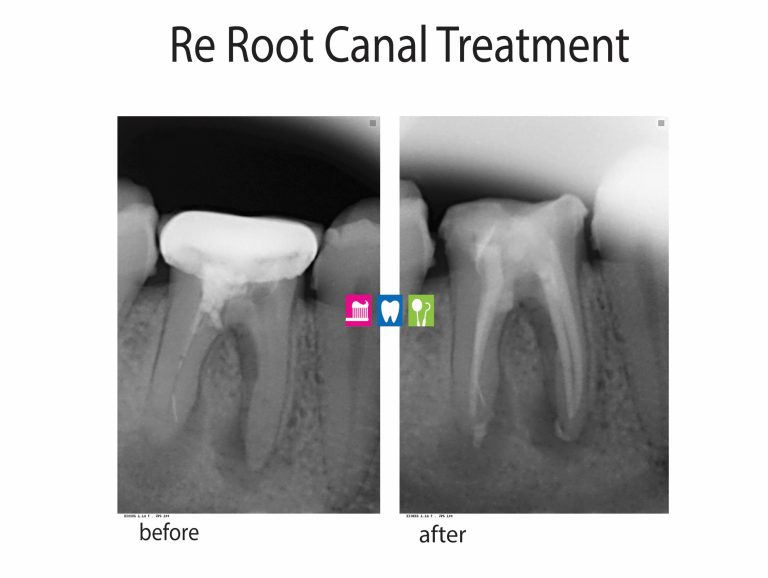Last Updated on 3 weeks by DR. ALBIN SIPES
A root canal takes 3 visits because it involves several steps and requires time for healing. This dental procedure typically consists of an initial consultation, the actual root canal treatment, and a follow-up visit for permanent restoration.
During the first visit, the dentist assesses the tooth’s condition and discusses treatment options. The second visit involves removing the infected pulp and cleaning the root canals before sealing them off. This step ensures that the tooth is free from bacteria and prevents further infection.
Lastly, a third visit is necessary to place a dental crown or filling to strengthen and protect the tooth. Each visit allows for proper examination, treatment, and healing, ensuring the best possible outcome for the patient’s dental health.
The Purpose Of A Root Canal Treatment
A root canal treatment is a procedure used to save a tooth from extraction. It involves removing the infected pulp from the tooth’s root canals, cleaning them, and sealing them to prevent further infection. This process typically requires three visits to the dentist.
During the first visit, the dentist diagnoses the need for a root canal and prepares the tooth for treatment. The second visit involves removing the infected pulp and cleaning the root canals. Finally, on the third visit, the dentist fills and seals the canals, restoring the tooth’s functionality.
Timely intervention is crucial to prevent the infection from spreading and causing more extensive damage. By addressing the issue promptly, a root canal treatment can save the natural tooth and eliminate the need for a more invasive treatment like extraction or dental implants.
First Visit: Evaluation And Diagnosis
During the first visit for a root canal, the dentist will evaluate and diagnose the issue. This involves an initial consultation and dental examination. X-rays and imaging will also be done to assess the severity of the infection. The dentist will discuss treatment options and expectations with the patient.
Second Visit: The Root Canal Procedure
During the second visit, the root canal procedure begins with the administration of local anesthesia. The affected tooth is numbed to ensure a painless experience. Once numb, the dentist accesses the inner chamber of the tooth and carefully removes the inflamed or infected pulp.
This step is crucial in eliminating the source of pain and preventing further damage. After pulp removal, the dentist thoroughly cleans and disinfects the root canal to eliminate any bacteria or debris. This ensures a sterile environment within the tooth.
To protect the tooth in the interim, a temporary filling is placed. This filling serves the purpose of sealing the tooth until the final visit, where a permanent restoration will be placed.
Healing And Recovery Period
The healing and recovery period after a root canal is essential for successful treatment outcomes. It’s important to allow sufficient time for healing to ensure the best chance of recovery. Antibiotics and pain management play a crucial role in preventing infection and reducing discomfort.
Following post-operative care instructions, such as avoiding hard foods and practicing good oral hygiene, is also vital for a smooth healing process. Regular check-ups with your dentist will monitor progress and address any concerns that may arise. Remember, patience and proper care during the healing period can lead to a healthy and pain-free smile in the long run.
Third Visit: Restoration And Finalizing The Treatment
The third visit for a root canal treatment involves restoring and finalizing the tooth’s healing progress. Evaluation of the healing progress is necessary to determine whether a dental crown or filling is needed. After assessing the tooth, the final restoration is placed to protect and restore its functionality.
It is crucial to follow up with proper care and regular check-ups to ensure the success of the treatment and maintain oral health. By adhering to these steps, the three-visit process for a root canal treatment provides effective and long-lasting results.
So, don’t hesitate to seek proper dental care to ensure the optimal health of your teeth.
Additional Considerations
Root canals often require three visits due to additional considerations. Factors like the complexity of the case and the extent of the infection can affect the duration of treatment. Possible complications may arise during the process, but they can be addressed by the dentist promptly.
In some cases, alternative options to multi-visit root canal treatment may be available depending on the specific situation. It is crucial to understand the importance of completing the treatment to ensure the long-term success of the procedure. Ultimately, the number of visits is determined by the individual case, and it is always best to consult with a dental professional for personalized advice and guidance.
Frequently Asked Questions For Why Does A Root Canal Take 3 Visits
Why Do Root Canals Require Multiple Visits?
Root canals often require multiple visits because the process involves several steps to thoroughly clean and seal the infected tooth. The visits allow the dentist to remove the infected pulp, disinfect the tooth, shape the canal, and finally, seal it to prevent reinfection.
What Happens During Each Visit Of A Root Canal?
During the first visit of a root canal, the dentist will remove the infected pulp and clean the tooth. In the second visit, they will shape the root canal and place a temporary filling. The final visit involves removing the temporary filling, placing a permanent filling or crown, and restoring the tooth’s function and appearance.
How Long Does Each Visit Of A Root Canal Take?
The duration of each root canal visit depends on the complexity of the case and the tooth’s condition. On average, each visit can take 60 to 90 minutes. However, the dentist may schedule additional visits if needed for more extensive treatment or to ensure the best outcome for the patient.
Can A Root Canal Be Completed In A Single Visit?
In some cases, a root canal can be completed in a single visit. However, this depends on various factors such as the extent of infection, accessibility of the tooth, and the patient’s overall oral health. It is best to consult with your dentist to determine the optimal treatment plan for your specific situation.
Are There Any Risks Associated With Root Canal Treatment?
Root canal treatment is generally safe and effective. However, like any dental procedure, there are potential risks. These may include temporary discomfort or sensitivity, infection, damage to surrounding tissues, or failure to completely remove the infection. Your dentist will discuss the risks and benefits with you to ensure you make an informed decision about your treatment.
Conclusion
A root canal takes three visits due to the intricate nature of the procedure. The first visit involves a thorough examination and evaluation, followed by the removal of the infected pulp during the second visit. This step ensures the elimination of any remaining bacteria and prevents further damage to the tooth.
The final visit focuses on the restoration of the tooth, usually with a crown or filling, to strengthen and protect it from future infections. While the multiple visits may seem time-consuming, they are necessary for the success and longevity of the root canal treatment.
Remember, it is essential to follow your dentist’s instructions and attend all scheduled visits to ensure a healthy and functional tooth in the long run. Don’t hesitate to reach out to your dentist if you have any concerns or questions about your root canal treatment.






